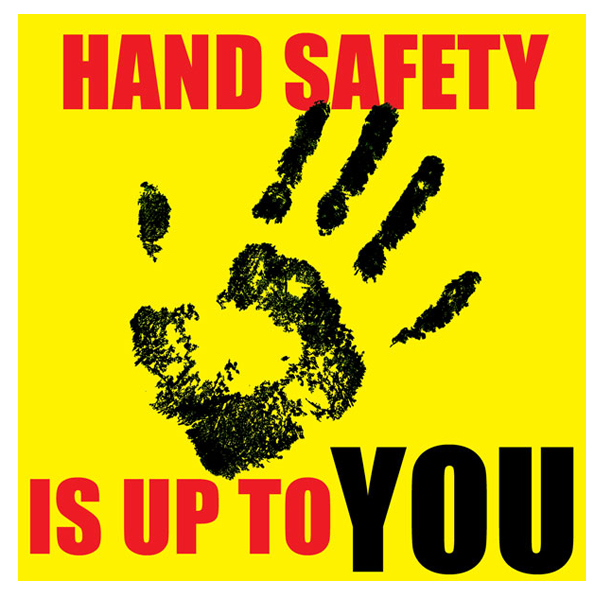This practical exercise is an example of how a simple task can become difficult after a hand injury:
Tuck your thumbs into the palms of your hands. Now try tying your shoelaces.
How important are your hands? The hand is one of the most complex parts of the body. The movement of the tendons, bones, tissues and nerves allows a person to grip and do a wide variety of complex jobs. Without hands, it would be extremely difficult for someone to do routine simple tasks, such as opening doors, using a fork or tying shoelaces. Hands make a person a skilled, valuable worker.
The ability to operate equipment safely and efficiently is something that all employees should not take for granted. Complacency in the workplace can lead to accidents and injuries that may have permanent consequences. The loss of a finger or entire hand can have an enormous impact on a person’s life and end careers in an instant.
Common causes of hand injuries are:
Carelessness, rushing completion of a task, bypassing safety procedures, failure to use proper PPE, distractions while performing complex tasks, general lack of situational and environmental awareness.
Safe work practices to keep your hands and fingers intact:
Inspect all equipment before use and choose the right tools for the job. Never use defective equipment. Tools, equipment or machinery with missing guards or defective safety equipment should not be used and tagged out of service.
Always use the correct PPE for the job, (if unsure, ask a supervisor).
Do not wear jewelry that could become caught on or entangled in tools, machinery or equipment.
Always de-energize and follow lock-out/tag-out procedures before carrying out any maintenance or repair work. This includes minor repairs or bit & blade changes.
Never place fingers, hands or arms through moving parts.
Be aware that many items on the jobsite, when in use, may be hot enough to burn exposed skin. Do not use hands to check for hydraulic leaks or sharp edges. Always read and follow manufacturers safety recommendations for proper PPE use when handling chemicals.
By Steve Gailbreath
